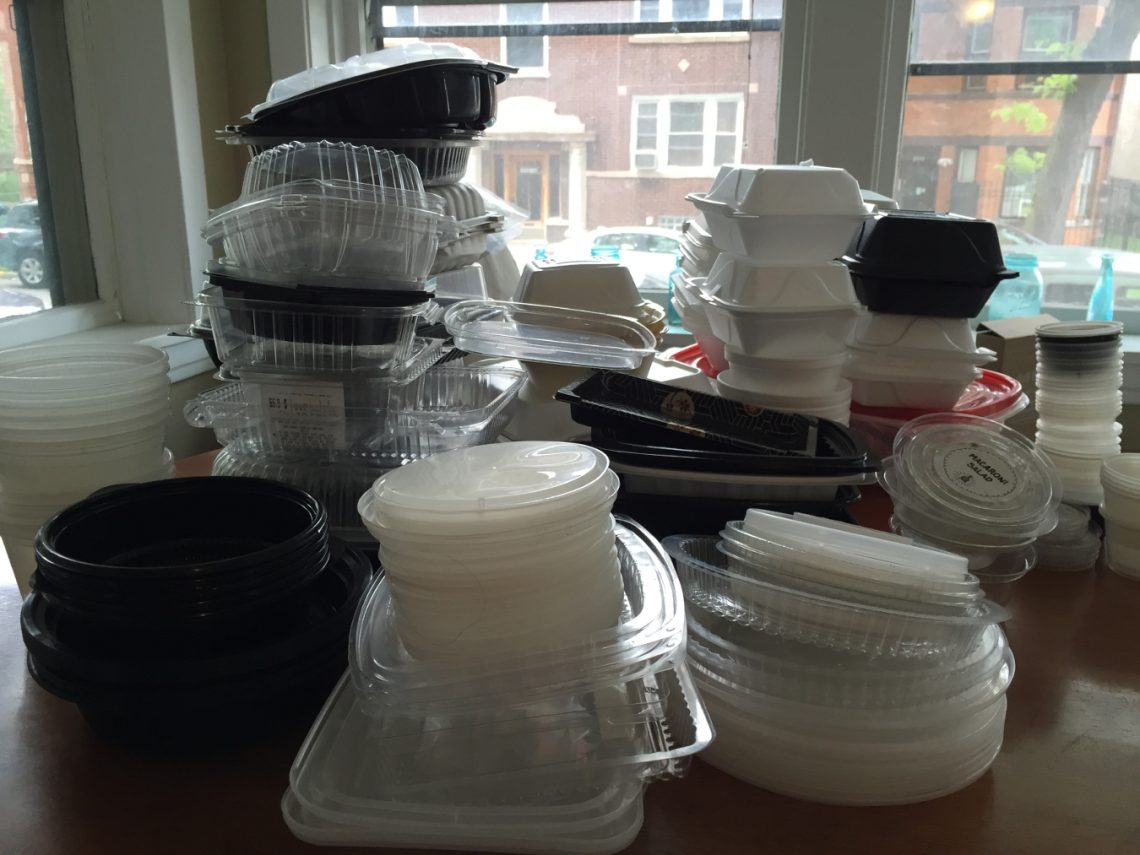
- 27 Dec, 16
- by Admin
- in Disposable Bag Reduction
-
 0
0
-

 0
0
Plastics Better Alternatives Now (BAN) List
The Plastics BAN (Better Alternatives Now) List, an initiative of four non-profit conservation organizations— The 5 Gyres Institute, Clean Production Action, Surfrider Foundation, and UPSTREAM— seeks to identify the world’s most dangerous plastics and readily-available alternatives.
The first report from the Plastics BAN List published last month, focuses on California and includes a list of top offenders. These include plastic bags, beverage containers and bottle tops, polystyrene cutlery and even cigarette butts, which are made with plastic, too.
The Plastics BAN List provides a window into the true environmental and human health costs of plastics, and can be used to help corporations understand their responsibility to design better.
SUMMARY OF CONCLUSIONS
1. Most of the worst offenders are designed for “on-the-go” applications, which are more likely to end up as pollution in the environment. Virtually all of the products on the BAN List are “to-go” products like takeout containers, coffee lids, beverage bottles and straws.
2. More recycling will not solve plastic pollution. Nearly all of the 15 products on the BAN List have no economic value in today’s recycling systems. They are literally “designed for the dump” and are often contaminants in recycling systems, either damaging equipment and causing costly repairs when they enter recycling facilities (like plastic bags) or ending up as a net cost for recyclers to unload at a loss (like polystyrene) rather than as profitable materials.
3. Many of the BAN List products are manufactured with toxic chemicals, and none of the plastics used are examples of green chemistry. Many of the products are made from polystyrene, a probable human carcinogen. Other plastics contain harmful additives like PET, which uses a toxic heavy metal – antimony – as a catalyst in the production process. None of the products are manufactured according to green chemistry principles.
4. Better alternatives to BAN List products are available today for nearly every single harmful plastic use. When we conducted an assessment of functional replacements and material substitutions for the harmful plastic products, we found that safer, more sustainable alternatives were widely available today. We do not need to wait for technological “fixes” to solve plastic pollution. We can start by moving to better alternatives now that deliver the same product or service without the harm.
5. More data needs to be collected on pollution in the environment and the identity of responsible producers. Data collection methods should be standardized. We discovered that different entities collected pollution data in different ways. For example, one institution might lump all plastic cups together, while another might differentiate between hard plastic cups and foam cups. It’s important for the scientific community to standardize pollution research methods and categories and to increase monitoring of plastic in the environment and to identify the product producers for transparent discussions on producer responsibility.
6. The BAN List is a good place to start for voluntary action by industry and regulatory action by government. If we want to solve plastic pollution – especially in California – we can start with voluntary and regulatory action to replace the worst offenders with better alternatives now. The BAN List methodology can be applied and replicated in other jurisdictions to come up with similar target lists for action.
Read the full Plastics BAN Report here.
Cleaning Up Delhi's Dirty Air Using Jet Engines
Plastic Bags and Climate Change